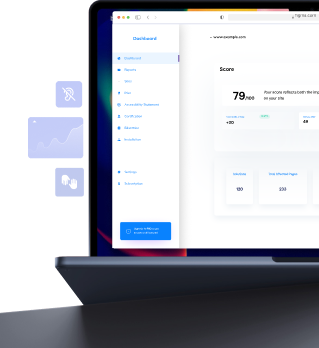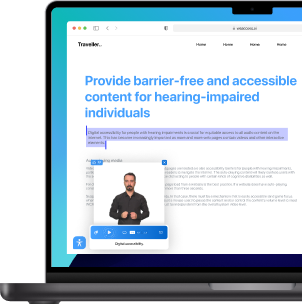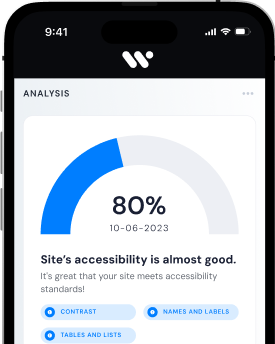E-Commerce Accessibility: Transforming the Online Shopping Experience
What is E-commerce Accessibility?
E-commerce accessibility is an essential aspect of online store development that focuses on ensuring digital accessibility for all users. By making your ecommerce website inclusive and accessible to everyone, you can attract a wider range of customers, including those using assistive technologies like screen readers and keyboards. Accessibility standards such as WCAG and the Americans with Disabilities Act require ecommerce businesses to address accessibility issues by providing features like alt text, captions, and user testing.
Conducting an accessibility audit and using a web accessibility evaluation tool can help you identify and resolve any accessibility requirements that your e-commerce site may not meet. Prioritizing digital accessibility can greatly improve the overall user experience and ultimately make your online store accessible to people with disabilities in compliance with European Accessibility Act and other accessibility standards.
Understanding E-Commerce Accessibility
In today's digital age, ecommerce businesses must prioritize accessibility to ensure that every potential customer can easily navigate their ecommerce store. An accessible online presence not only improves the overall e-commerce experience for users, but also helps online retailers reach a wider audience. By designing their ecommerce platform with accessibility in mind, businesses can improve accessibility and avoid potential accessibility lawsuits. It's crucial to consider accessibility laws, such as the Accessibility for Ontarians with Disabilities act, and conduct accessibility testing and user testing with individuals to ensure an inclusive online experience.
One important aspect of e-commerce accessibility is the creation of an accessibility statement on the website, outlining the steps taken to prioritize accessibility for all users. By working with an accessibility expert, \a business can identify areas of improvement and make necessary changes to improve the website’s accessibility. Ultimately, by focusing on ecommerce web accessibility, businesses can create a more welcoming and accessible online environment for all customers.
Exploring ADA Compliance for E-Commerce Websites
Exploring ADA Compliance for E-Commerce Websites: Many e-commerce businesses are realizing the importance of digital accessibility when it comes to accessibility for e-commerce. Accessibility means ensuring that all users can easily access and navigate an online store to purchase their desired products or services. In the ever-evolving online shopping landscape, enhancing accessibility through keyboard accessibility, common accessibility solutions, and new accessibility tools is crucial.
Accessibility solutions in the context of accessibility for e-commerce websites involve ensuring online forms are easily accessible and that products and services can be easily purchased by all users. The World Wide Web Consortium sets standards for accessibility on the World Wide Web, which e-commerce businesses must adhere to in order to maintain an accessible online presence.
Implementing Accessibility Features for People with Disabilities
Implementing accessibility features for people with disabilities is crucial in today's digital age. With the majority of retail sales now happening online, the accessibility of e-commerce websites is more important than ever. Many ecommerce websites face accessibility challenges that can be addressed through automated accessibility testing and testing with individuals with disabilities. Ensuring an accessible online shopping experience not only helps in digital accessibility compliance, but also recognizes the power of the web in its universality.
How to Ensure Accessibility in E-commerce Websites
Ensuring accessibility in e-commerce websites involves implementing specific standards and features to cater to the diverse needs of users with disabilities.It is essential to make the website accessible to people who may navigate using screen readers, rely on captions for multimedia content, and require clear and descriptive links and alt text for images.
Addressing Accessibility Barriers in E-Commerce Platforms
Addressing accessibility barriers in e-commerce platforms is essential for ensuring that all users, including those with disabilities, can navigate and make transactions on an accessible online store. Web is in its universality, meaning that retail sales will be e-commerce going forward. However, for this shift to be successful, accessibility requires careful consideration and implementation. Companies must run an accessibility audit to identify and address any potential barriers that could hinder users from completing their sales will be e-commerce purchases.
Importance of Website Accessibility in E-Commerce Success
Website Accessibility plays a crucial role in the success of e-commerce businesses. In today's digital age, ensuring that all users, including those with disabilities, can access and navigate a website is essential. Accessibility isn't just about compliance with regulations, but also about providing an inclusive and positive user experience. A website that is accessible to all users can increase traffic, engagement, and ultimately, conversions. By investing in website accessibility, businesses can reach a wider audience and improve their overall online presence.
Navigating ADA Compliance in E-Commerce
Navigating ADA Compliance in E-Commerce can be a complex process, but it is essential for ensuring equal access to individuals with disabilities. Understanding the Americans with Disabilities Act requirements for online businesses is crucial to avoid potential legal issues. Implementing accessible design features such as alt text for images, keyboard navigation, and screen reader compatibility is key to making your e-commerce website compliant. Regular audits and updates are necessary to ensure ongoing ADA compliance and provide a seamless user experience for all customers.
Ensuring Accessibility for People with Disabilities in E-Commerce
It is crucial for businesses to prioritize accessibility in their e-commerce platforms to cater to the needs of people with disabilities. By incorporating features such as screen readers, keyboard navigation, and alternative text for images, companies can ensure that all users have equal access to their products and services. Additionally, providing options for adjustable text size and color contrast can further improve the user experience for individuals with visual impairments.
Ensuring compliance with the Americans with Disabilities Act (ADA) and Web Content Accessibility Guidelines (WCAG) is not only a legal requirement, but also a way to demonstrate a commitment to inclusivity and diversity. By investing in accessibility features, businesses can reach a wider audience and create a more inclusive online shopping experience for all customers.
Utilizing Accessibility Checkers for ADA Compliance
Utilizing Accessibility Checkers is essential for ensuring ADA Compliance on websites. These tools help identify areas that may not be accessible to individuals with disabilities, such as screen readers or keyboard navigation. By running regular checks with an Accessibility Checker, website owners can make necessary adjustments to ensure all users can access and interact with their content. This proactive approach not only helps meet legal requirements but also creates a more inclusive online experience for all visitors.
Strategies for Implementing Accessibility in E-Commerce Stores
Implementing accessibility in e-commerce stores is crucial for reaching a wider customer base and ensuring that all users can easily navigate and make purchases on your website. Strategies such as using alt text for images, providing keyboard navigation options, ensuring color contrast for readability, and testing with screen readers are essential for creating an inclusive shopping experience. By prioritizing accessibility, e-commerce businesses can improve user satisfaction, drive conversion rates, and demonstrate a commitment to serving all customers.
The Role of Free Website Accessibility Checkers in Compliance
Free website accessibility checkers play a crucial role in ensuring that websites are compliant with ADA regulations and other accessibility standards. These tools help website owners identify barriers to access that may prevent individuals with disabilities from effectively using the site. By running these checks regularly, website owners can address any issues that arise and make necessary modifications to improve accessibility for all users.
The Future of Online Shopping: E-Commerce Accessibility Trends
The future of online shopping is rapidly evolving, with accessibility playing a crucial role in shaping e-commerce trends. As more consumers turn to online platforms for their shopping needs, the importance of ensuring websites are accessible to all users cannot be understated. From responsive design to alt text descriptions for images, businesses are making strides to create a more inclusive online shopping experience. This focus on accessibility will continue to drive e-commerce trends in the coming years, ultimately benefiting both businesses and consumers alike.
The Shift Towards Accessible E-Commerce Platforms
The shift towards accessible e-commerce platforms is gaining momentum as businesses recognize the importance of catering to all customers, including those with disabilities. By implementing features such as screen reader compatibility, keyboard navigation, and alt text for images, retailers can provide a more inclusive shopping experience. This not only improves customer satisfaction but also helps businesses comply with ADA regulations and demonstrate their commitment to diversity and accessibility. As more companies prioritize accessibility, the e-commerce landscape is becoming more welcoming and inclusive for all consumers.
How E-Commerce Accessibility Shapes Online Shopping Experiences
E-commerce accessibility plays a crucial role in shaping online shopping experiences. When websites are accessible to all users, regardless of their abilities or disabilities, it ensures a seamless and convenient shopping experience for everyone. By implementing accessible design features such as alternative text for images, keyboard navigation options, and screen reader compatibility, e-commerce websites can reach a wider audience and provide a better user experience. This inclusivity not only benefits individuals with disabilities but also enhances the overall shopping experience for all users.
The Universal Power of Accessible Retail: Access for All
The Universal Power of Accessible Retail: In today's global marketplace, accessibility is key when it comes to reaching a wide range of customers. By ensuring that retail spaces are accessible to all individuals, businesses can create a welcoming and inclusive environment that caters to diverse needs and abilities. This not only increases customer satisfaction and loyalty but also opens up new opportunities for growth and innovation within the retail industry.
Predictions: The Majority of Retail Sales Will Be Through Accessible E-Commerce Platforms
Predictions: The majority of retail sales will be through accessible e-commerce platforms due to the increasing popularity and convenience of online shopping. With the advancements in technology and the growing number of consumers turning to online shopping, traditional brick-and-mortar stores may start to see a decline in sales. Retailers who invest in their e-commerce capabilities and focus on creating a seamless online shopping experience for their customers will likely see the most success in the future.

















